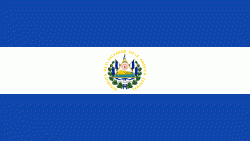Santiago Nonualco (Santiago Nonualco)
Santiago Nonualco is a municipality in La Paz department of El Salvador.
"Nonualco" means tribe of mutes ("tribo de mudos") in the native Nahuat language. There are three "Nonualcos" in the area, the other two are San Juan Nonualco and San Pedro Nonualco.
Santiago Nonualco is a relatively poor community even by El Salvadoran standards. The primary historical economic activity has been subsistence farming and the cultivation of sugar cane, providing back-breaking work for those willing to bake in the sun swinging their "corvos," curved tobacco-knife like machetes, for a couple of dollars a day. Currently there are very few employers in the area. Santiago Nonualco has a small central market, a few modest stores (tiendas), diners (comedores), bars, doctor's office, pharmacy, a couple of dentists, a small bank (casa de credito), some lawyers, and not much else. The nearest factories are located near the airport at El Pedregal, about 25 minutes away by bus.
Santiago Nonualco has one famous native son, one warrior. Anastasio "Indio" Aquino, gained fame leading an uprising against the Spanish in 1832-3. He led his insurgency from a cave located just north of what is now El Salvador International Airport. "La cueva de Indio Aquino" (Indio Aquino's cave) is a little-visited site located in Cerro El Tigre overlooking the Jiboa River and the airport. After a seven-month-long rebellion, Indio Aquino was captured and executed by firing squad in San Vicente.
"Nonualco" means tribe of mutes ("tribo de mudos") in the native Nahuat language. There are three "Nonualcos" in the area, the other two are San Juan Nonualco and San Pedro Nonualco.
Santiago Nonualco is a relatively poor community even by El Salvadoran standards. The primary historical economic activity has been subsistence farming and the cultivation of sugar cane, providing back-breaking work for those willing to bake in the sun swinging their "corvos," curved tobacco-knife like machetes, for a couple of dollars a day. Currently there are very few employers in the area. Santiago Nonualco has a small central market, a few modest stores (tiendas), diners (comedores), bars, doctor's office, pharmacy, a couple of dentists, a small bank (casa de credito), some lawyers, and not much else. The nearest factories are located near the airport at El Pedregal, about 25 minutes away by bus.
Santiago Nonualco has one famous native son, one warrior. Anastasio "Indio" Aquino, gained fame leading an uprising against the Spanish in 1832-3. He led his insurgency from a cave located just north of what is now El Salvador International Airport. "La cueva de Indio Aquino" (Indio Aquino's cave) is a little-visited site located in Cerro El Tigre overlooking the Jiboa River and the airport. After a seven-month-long rebellion, Indio Aquino was captured and executed by firing squad in San Vicente.
Map - Santiago Nonualco (Santiago Nonualco)
Map
Country - El_Salvador
 |
 |
| Flag of El Salvador | |
Among the Mesoamerican nations that historically controlled the region are the Lenca (after 600 AD), the Mayans, and then the Cuzcatlecs. Archaeological monuments also suggest an early Olmec presence around the first millennium BC. In the beginning of the 16th century, the Spanish Empire conquered the Central American territory, incorporating it into the Viceroyalty of New Spain ruled from Mexico City. However the Viceroyalty of New Spain had little to no influence in the daily affairs of the isthmus, which was colonized in 1524. In 1609, the area was declared the Captaincy General of Guatemala by the Spanish, which included the territory that would become El Salvador until its independence from Spain in 1821. It was forcibly incorporated into the First Mexican Empire, then seceded, joining the Federal Republic of Central America in 1823. When the federation dissolved in 1841, El Salvador became a sovereign state, then formed a short-lived union with Honduras and Nicaragua called the Greater Republic of Central America, which lasted from 1895 to 1898.
Currency / Language
| ISO | Currency | Symbol | Significant figures |
|---|---|---|---|
| SVC | Salvadoran colón | 2 | |
| USD | United States dollar | $ | 2 |
| ISO | Language |
|---|---|
| ES | Spanish language |















